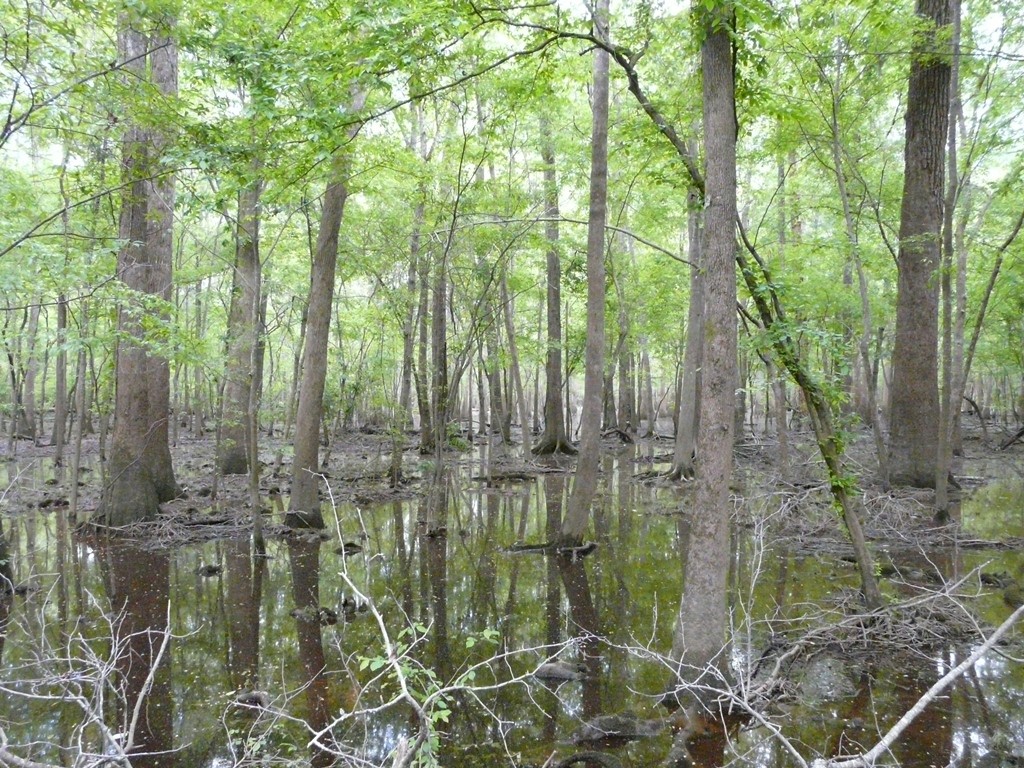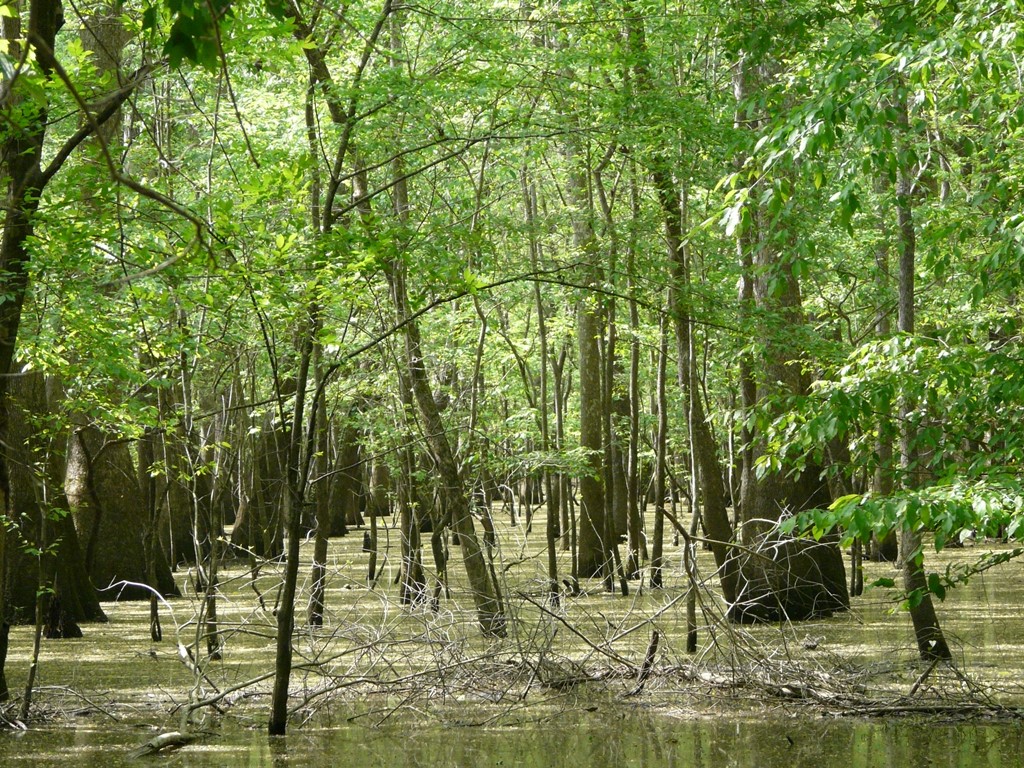
Congaree National Park Jr. Ranger Patch
A nondescript road through nondescript trees. Congaree National Park preserves 11,000 acres of old growth bottomland hardwood forest in the United States with some of the largest trees (of their kind) in the United States. However, on first impression, it reminded us more of a nice local nature center that you could find almost anywhere in the U.S.
After driving 30 minutes from Columbia, SC, we pulled into the tree-shrouded parking lot at the Harry Hampton Visitor Center. We stopped at the Visitor Center to learn more about the park and pick up Junior Ranger books for the kids. Outside the Visitor Center, we noticed a giant “Mosquito Meter” that ranged from (1 – All Clear to 6 – War Zone). Thankfully the meter was between 2 and 3, so we were optimistic that that mosquitoes wouldn’t be too bad. Given our limited time (stopping at Congaree during Spring Break en route from Charleston, SC to Blacksburg, VA) we decided to focus our time on the stroller-friendly boardwalk trail.
The boardwalk led us through the nondescript forest around the Visitor Center but as we descended, everything quickly changed. We noticed that the trees started looking taller and taller. Not like Redwoods or Sequoias with mighty trunks, but long, lean, and wispy. We started to see a greater variety of trees including oaks, pines, bald cypress, sweetgum, elms, hollies, and so many others. Underneath the trees, the ground shifted from dirt to mud to water.

Congaree National Park Boardwalk
Pausing along the boardwalk, we saw bugs, fishes, spiders, snakes, mosquitos and more flitting, swimming, and sliding on or under the water. As we looked down into the water, we also saw the life above. The sun and water reflected the trees creating a complex world of depth, light, and life.

Congaree National Park Boardwalk
As it was April in South Carolina, some of the trees had already lost their spring blooms. The blooms started to blanket the water with a flowery haze.

Congaree National Park Boardwalk
Soon, the flowery blanket covered all of the water and the trees stretched higher as we passed some of Congaree’s champion trees (a champion tree is one that is judged to be the largest of its species according to a formula based on height, circumference, etc).

Congaree National Park Boardwalk
Walking along the boardwalk, the colors were constantly changing. With clouds, bark and mud, it became dark. With shimmering water and bright green leaves, it became vibrantly verdant. With flowers floating on the floodplain and subtle reflections of the wispy trees, it became serene. With sunlight and the creatures it became brightly alive.

Congaree National Park Boardwalk
Walking through the floodplain, we came across a fallen cypress that made us wonder how any of the trees were able to grow so tall in this soft muddy water. We quickly discovered at least one of the possible answers.

Congaree National Park Boardwalk
Cypress knees sprung from the swamp like forest stalagmites. What are cypress knees? While they look like the byproduct of overactive beavers, cypress knees are part of the cypress root system. As the cypress tree grows and its roots spread, some roots extend above ground, creating cypress knees. While scientists aren’t sure why cypress trees have cypress knees, a prevailing theory is that they add to the structural strength enabling it to grow very tall in very wet and unstable environments.

Congaree National Park Boardwalk
At Congaree National Park, seasonal flooding often covers parts of the boardwalk. While we saw some take off their shoes and socks and carry them through the flooded path, we reached a point where we could go no further (especially with the stroller, smaller kids, etc). So we shifted direction to explore other accessible sections of the boardwalk. Everywhere the sun filled the trees and flowery blanket with a glow that pervaded the forest.

Congaree National Park Boardwalk
Most of the trees at Congaree National Park are ones you’ve seen before – but not like this. A cherrybark oak tree may grow to 100ft. At Congaree, they have a cherrybark oak that is over 160ft. Loblolly pine, in most places, grows 60-90ft tall. At Congaree, the national champion loblolly pine is 167 ft. With more than 20 state and national champion trees, the trees of Congaree National Park are exceptional.

Congaree National Park Boardwalk
But the story of Congaree National Park isn’t just tall trees. The story of spring in Congaree, is the trees, water, flowers, light and life working together to bring you something entirely new, entirely special.

Congaree National Park Boardwalk
We left Congaree National Park with a new understanding of “potential” – as well as a few more mosquito bites than we had a couple hours before. Every day we see trees and plants like we saw at Congaree (e.g. oak, pine, holly, etc), but from our visit to Congaree we now know their potential. We saw how ordinary plants, in an extraordinary environment, can become extraordinary. Taking the experience to heart, we brought the spirit of Congaree home to inspire an extraordinary environment for our family where the everyday can be amazing.
Photo credits: Full Van Fun
[jetpack_subscription_form title=”Sign up for our mailing list and don’t miss any future Full Van Fun stories!” subscribe_text=”Enter your email address to subscribe to Full Van Fun and receive notifications of new posts by email.”]





